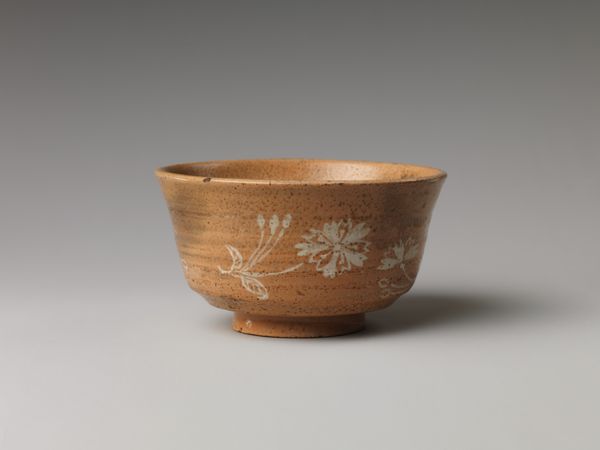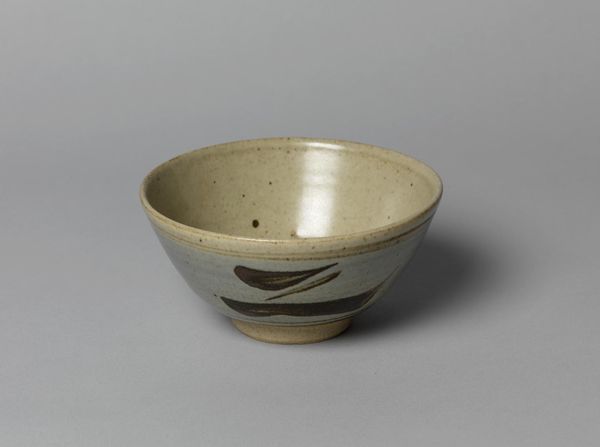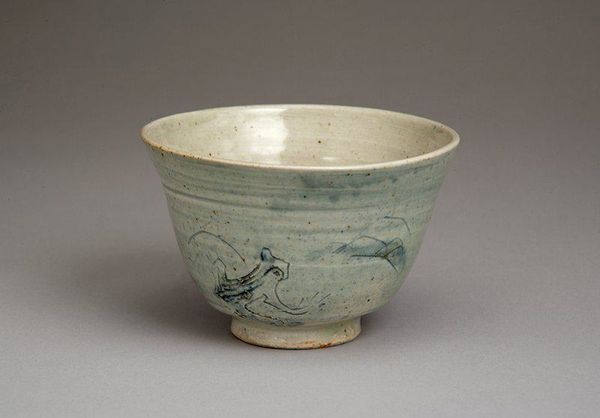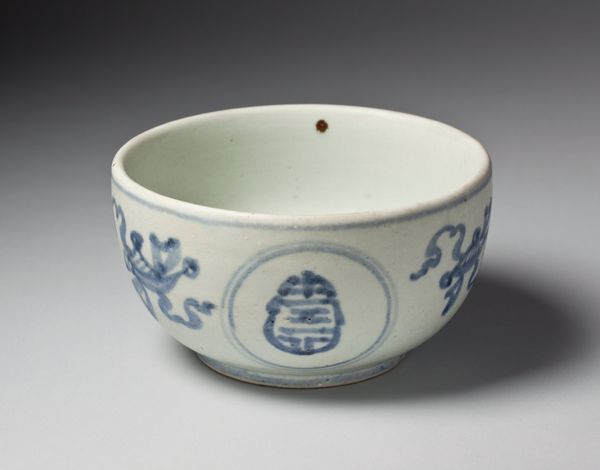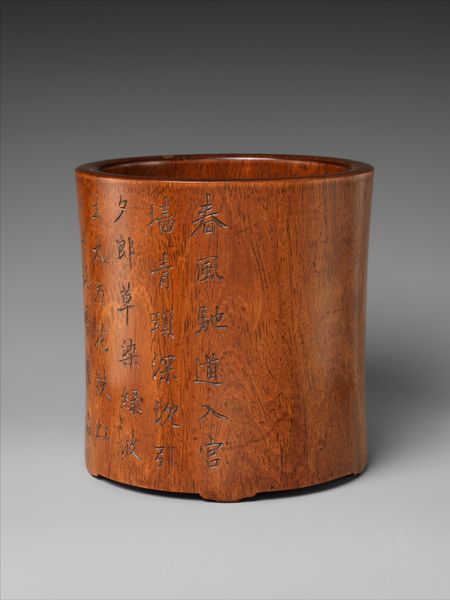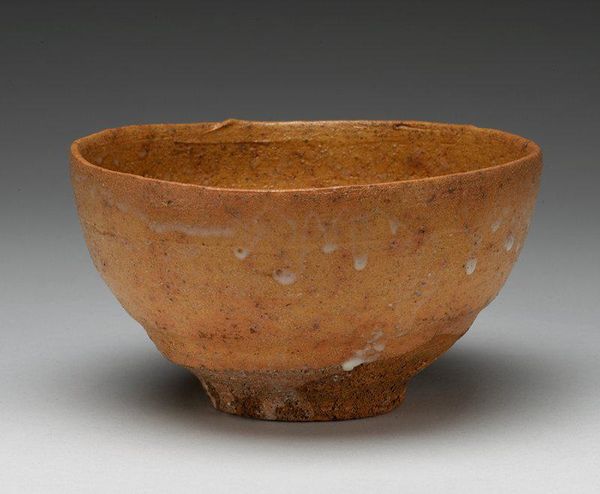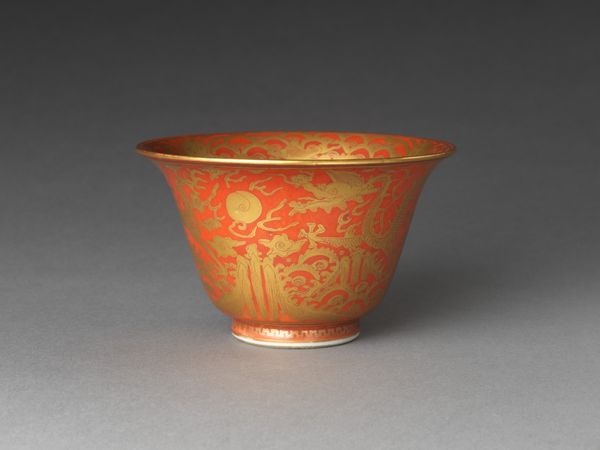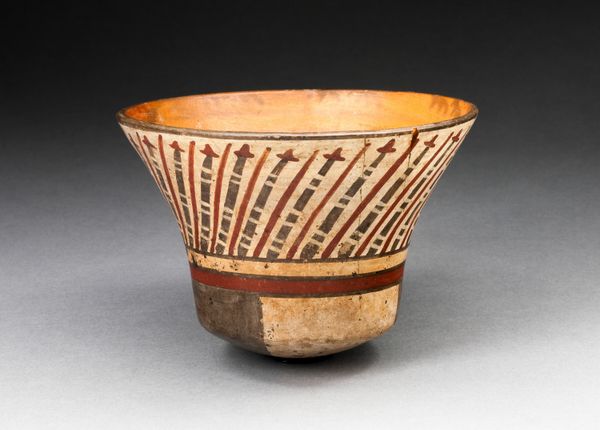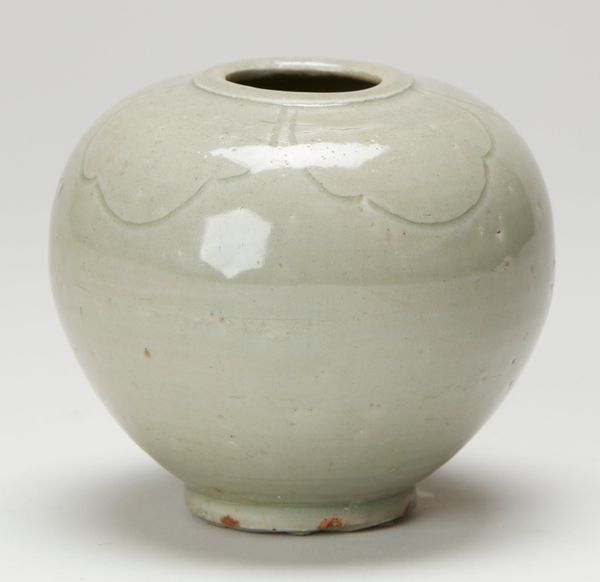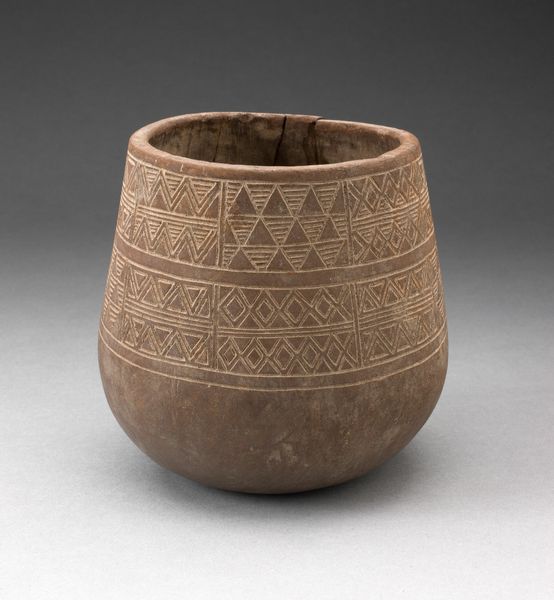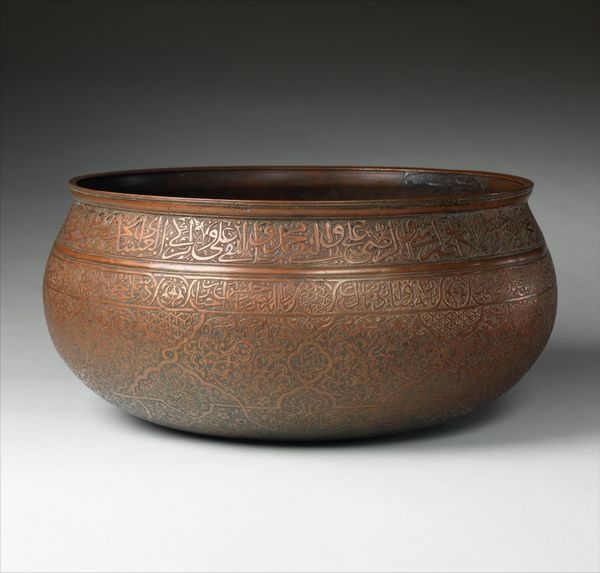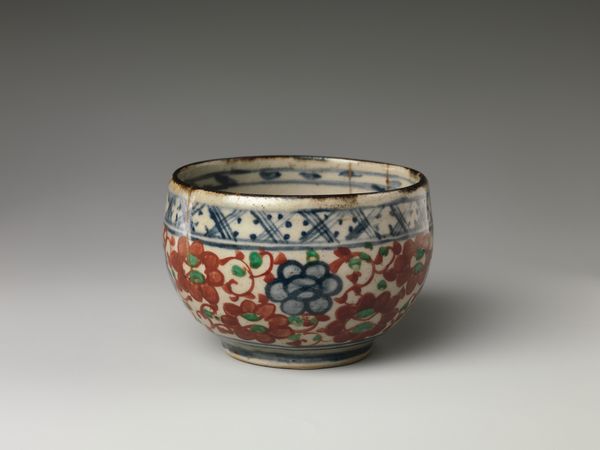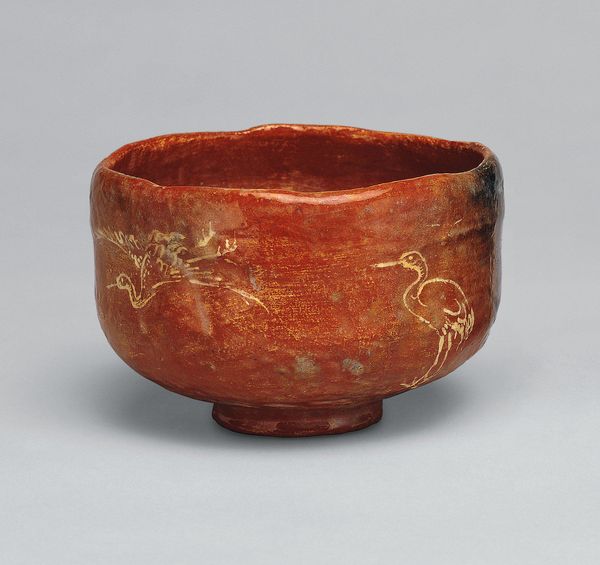
ceramic, textile
#
asian-art
#
ceramic
#
textile
#
orientalism
#
ceramic
#
calligraphy
Dimensions: H. 3 3/8 in. (8.6 cm); Diam. 4 7/8 in. (12.4 cm)
Copyright: Public Domain
Curator: I'm immediately drawn to the quietness of this piece, almost monastic in its simplicity. It's a teabowl with an autumn poem, made sometime between 1850 and 1899 by Eiraku Wazen. The ceramic is so tactile; I can almost feel the rough texture in my hands. What do you see? Editor: Well, it feels deliberately understated, yet charged. Looking at it through a postcolonial lens, I'm curious about its role, if any, in the Orientalist fantasies so common during that era. Was it made for local use, or specifically for export to the West, playing into Western stereotypes of East Asian cultures? Curator: Hmm, interesting. Though it does seem far too subtle for outright Orientalist pandering. It breathes the spirit of wabi-sabi; it embraces the imperfections. Note the calligraphy, a poem probably lamenting the ephemeral nature of autumn. There’s an acceptance of things fading, like the tea one drinks from it. Editor: Right, wabi-sabi is crucial here. That aesthetic tradition is often romanticized without acknowledging its roots in Zen Buddhism and its social context. This simplicity can be interpreted as a kind of refusal—refusing capitalist accumulation and embracing alternative, more sustainable, ways of relating to the world. It might be worth investigating the bowl's actual utility. Was it a luxury item despite its seeming austerity? Curator: Good question. And looking again at that poem, inscribed with such fluid strokes. The very act of inscription elevates the bowl, transforming utility into a contemplative object. Tea becomes ritual, not just beverage. Though maybe I'm over-romanticizing! Editor: No, but let's not forget that rituals can also be exclusive practices. Who had access to these kinds of refined objects and the leisure to perform such rituals? Thinking intersectionally reveals hierarchies, class dynamics, and social power structures at play, even within this unassuming teabowl. Curator: Yes, the question of access is important, and makes the whole sensory impact of the bowl…the quiet…the tactility…more layered. Editor: Absolutely. This simple vessel can open up conversations about trade, cultural appropriation, and the politics embedded in everyday aesthetics. A poem of autumn becomes a challenge to empire.
Comments
No comments
Be the first to comment and join the conversation on the ultimate creative platform.
